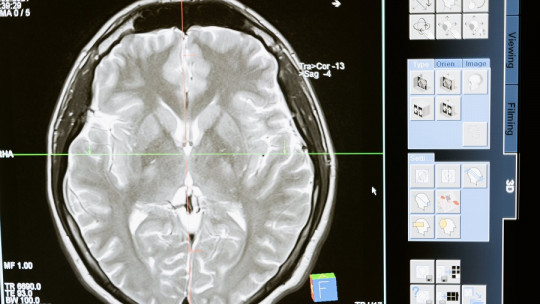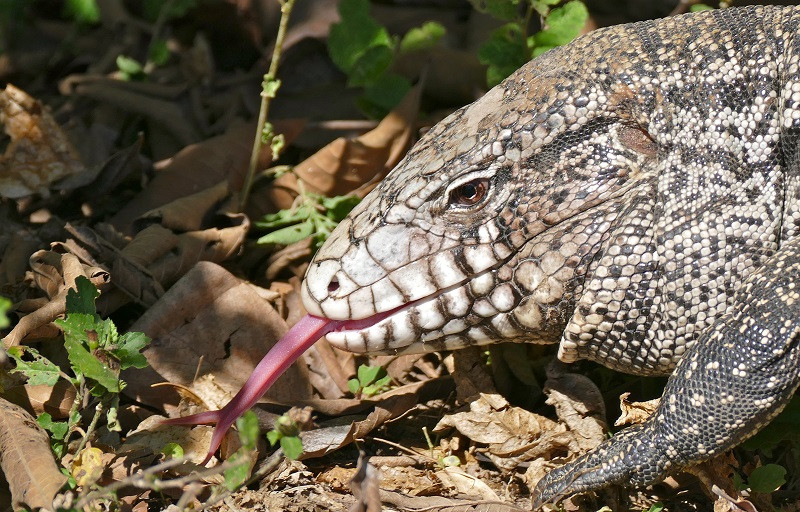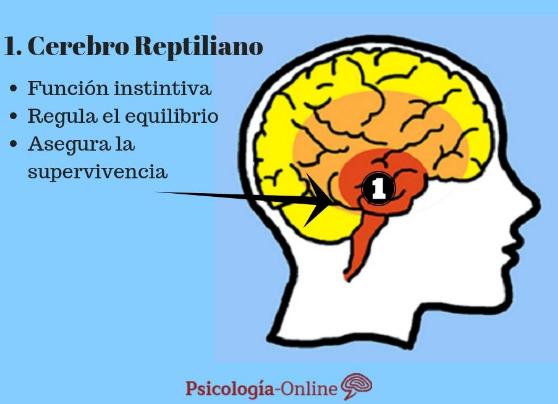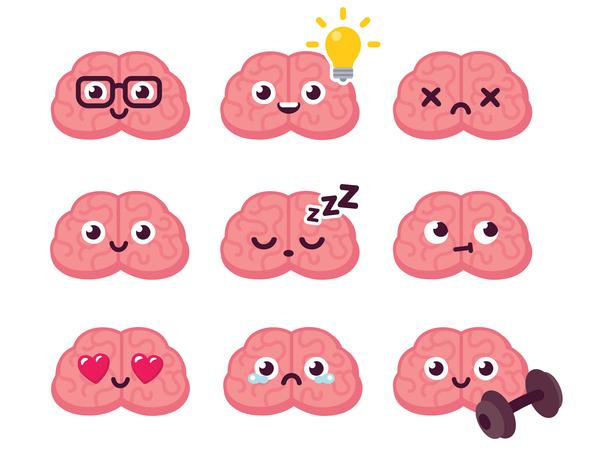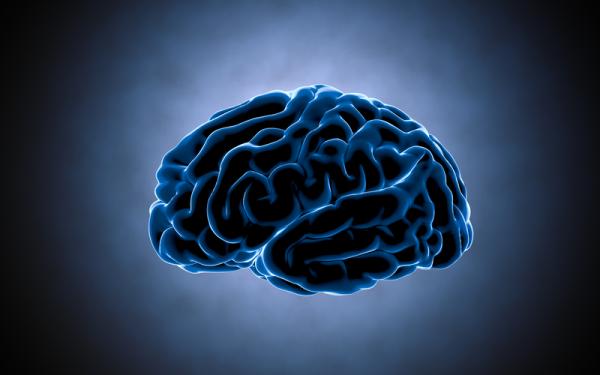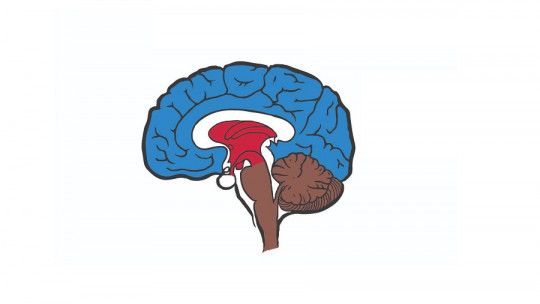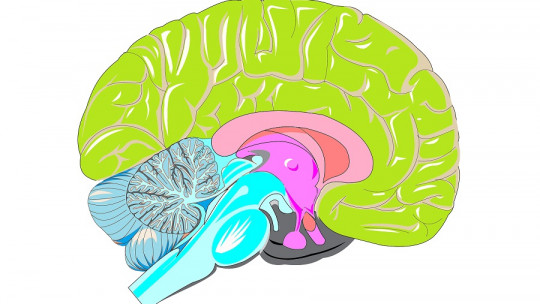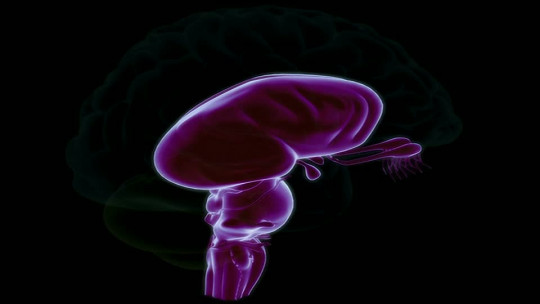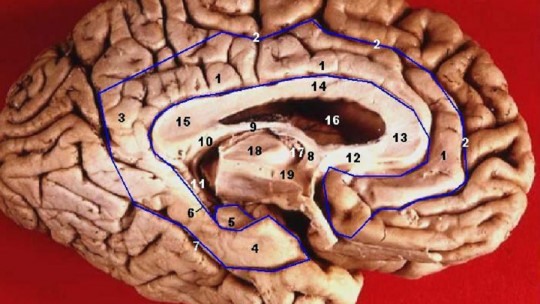The idea that human beings have a reptilian brain is widespread. This would be a vestige left to us by our cold-blooded, scaly ancestors who crawled on the ground, with faces like few friends.
Lizards, snakes and turtles have been considered very primitive animals, which is why the oldest, most instinctive and simplest part of our brain has been called the reptilian brain.
Is it true that we have a reptilian brain? Is it true that reptiles are as basic as they have been painted? We will see it below.
Do we have a reptilian brain?
Outside the field of psychology and academic neuroscience, the idea that human beings, along with other mammals, have something like a reptilian brain, is very popular and widespread. No, it’s not that this conspiracy theory that says there are lizard-shaped aliens among us is true, but that the idea of the reptilian brain says that in our species we still preserve some structures that our sauropsid ancestors had brain areas in charge of very basic, primitive and instinctive behavior.
We owe this idea to the doctor and neuroscientist Paul MacLean (1913-2007) who proposed his theory of the triune brain, a model to explain the organization of the human brain. His theory tried to make sense of the existence of contradictory or, at least, alternative systems in our behavior that, through evolution, had been organized and coordinated to be able to harmonize in the same organism.
This neuroscientist introduced his model in the sixties of the last century, although he developed it to its greatest extent in his book “The Triune Brain in Evolution” (1990). MacLean considered that in our skull there was not a single brain, but three, three brain structures that each acted as an independent but interconnected biological computer that would have appeared throughout evolution forming brain layers. Each of these brains would have its own intelligence, subjectivity, sense of time and also memory.
The three components of the triune brain would be the reptilian complex, the limbic system and the neocortex, appearing following this same order throughout the history of evolution. The most basic animal species from reptiles would only have the reptilian complex, while as one goes up the class of mammals the limbic system would be added and, when reaching primates, the neocortex would be added, making the brain humans and primates much more complex than that of reptiles.
1. The reptilian brain
The reptilian brain or R-complex would basically be made up of the basal ganglia, the brainstem and the cerebellum, structures considered the most basic within the model. The reason this component is known as the “reptilian brain” derives from the fact that the reptilian brain is dominated by the brainstem and the cerebellum.
According to proponents of the idea of the reptilian brain, This structure would be responsible for controlling instinctive behaviors and would focus on behaviors essential for survival including aggressiveness, sense of territoriality, domination and rituals.
The reptilian brain would be full of ancestral memories and would be in charge of autonomic or visceral functions such as breathing, heartbeat or vasomotor activity. It would also be involved in balance and muscle movement, taking charge of direct and reflex responses.
2. The limbic system
MacLean first introduced the term “limbic system” in a 1952 study, a term that would become widely used over time. The key parts of this second layer in the triune model would be the septum, amygdala, hypothalamus, cingulate cortex, and hippocampus
It is also known as the paleomammal brain because it is considered the oldest properly mammalian brain part. This structure would be related to everything that involves a more complex emotional response but also related to survival, also being involved in memory and social relationships, although it needs to interact with the neocortex to process emotions in their entirety.
The limbic system detects and avoids unpleasant sensations (e.g., pain) and seeks pleasant sensations (e.g., pleasure), acquiring great importance in the motivation and emotions we feel when we satisfy physiological functions such as feeding or reproducing. It would also be behind parental behavior.
3. The neocortex
The neocortex or cerebral cortex is a structure that is only found in mammals, including humans, and It is considered the most modern mammalian brain According to the model, the neocortex is the most characteristic part of the brain of the most evolved mammals, especially primates.
This structure is responsible for the execution of higher brain functions, encompassing cognition, sophisticated and precise motor control, as well as sensory perception. The evolution of this structure in mammals is considered a key advance that allowed humans to have cognitive functions such as language, reasoning, advanced thinking and intelligence.
The triune model considers that the human brain is the final result of a stratification process of these three structures, that is, the reptilian brain, the limbic brain and the neocortex have been added throughout the history of evolution, forming a progressively more sophisticated brain and resulting in that of our species. The reptilian would be the most profound, primitive and instinctive; the limbic would be the emotional component, involved in the motivation and care of offspring; and the neocortex would be the rational and modern brain, which allows us to use higher intellectual abilities.
Is this model true?
As we mentioned, the idea of the reptilian brain is widespread in popular culture, being assumed by many people. However, the truth is that The triune model is considered a myth and although some aspects of the components mentioned in it make some sense, the truth is that there is no study that has managed to separate emotions and rationality clearly, in addition to the line that separates our survival instincts, emotions and cognitive aspects is not very well defined.
MacLean’s model has been largely discarded since the 2000s. The idea that evolution has been adding new and more complex structures because it is contrary to what evolutionary scientists know about the evolutionary process In reality, what has happened throughout evolution is that the brain has been reorganizing existing circuits, giving them greater complexity and new functions. The appearance of new brain structures does not occur suddenly as if a new lobe grew out of nowhere, what has happened is that the old structures have been changing.
The idea of the triune brain, especially the reptilian brain, is rejected by the majority of current neuroscientists, especially among those who have notions of comparative neuroanatomy. As proof we have the case of the basal ganglia, structures typical of the reptilian brain that we can find in mammals such as the lion. In this feline, the ganglia are proportionally larger than those found in the telencephalon of most reptiles
Another aspect that dismantles the theory of the reptilian brain is that it is not only found in reptiles, but also in groups of vertebrates considered to predate the appearance of reptiles. An example of this is fish and amphibians, animals in which we also find the telencephalon, in this case made up of highly developed olfactory bulbs and a posterior brain.
Then we have the case of the structures of the limbic system. According to MacLean’s model, this structure is properly mammalian but ancient, being present in all mammals but not in reptiles, explaining why mammals are warmer and more sociable while reptiles are colder or lacking emotions. This idea is false, since other vertebrates have been found that show affection and interest in their offspring, as is the case of certain species of fish, birds and reptiles, such as crocodiles.
And finally we talk about the case of the neocortex. While it is true that other vertebrates do not have this six-layer lamination-shaped structure, this does not mean that they do not have homologous regions, something like their own neocortices functionally speaking. For example, The areas that make up the telencephalon of birds are connected to each other and perform similar functions to those reserved for the neocortex in the triune model.
We have proof of this in the fact that, even in popular culture, it is known that there are very intelligent birds, such as crows, capable of using sticks to remove insects from holes, putting stones in a test tube with water to raise the level and be able to drink it or even discriminate between different colors, associating some with food and others with the absence of it. That is, they have memory, perception, learning capacity and discrimination of stimuli.
In short, the idea of the reptilian brain is quite outdated. Reptiles are not as basic and simple as they are painted, nor is it that we have a purely reptilian brain that functions in a primitive way It is true that we have motivations associated with instinct, but rather than being due to the existence of three semi-independent brains, it is because we have an entire evolutionary history that has conserved functions considered appropriate for survival.
Furthermore, the bad reputation that reptiles have been given, considering them cold, unintelligent and lacking in emotions, completely dismantles the model. There are very intelligent, fast reptiles that display nurturing and loving behaviors. These animals, which are the only ones that we can say with absolute certainty have a reptilian brain, are not as basic as MacLean originally called them. It is clear that the triune brain model, although popular, is still a myth and that what we humans have is a human brain.


